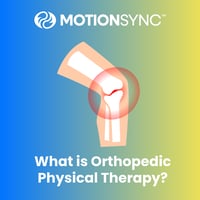Are you struggling with joint pain, recovering from a sports injury, or dealing with chronic...
Ankle Sprain 101: Your Guide to Management

Ankle sprains are one of the most common musculoskeletal injuries, occurring when the ligaments that support the ankle stretch or tear due to a sudden twist, fall, or misstep. While ankle sprains can be painful and limiting, proper treatment—including physical therapy, strengthening exercises, and lifestyle modifications—can help speed up recovery and prevent future injuries.
Read on to learn more about the causes, symptoms, and expert-backed management strategies for ankle sprains.
What Is an Ankle Sprain?
An ankle sprain occurs when the ligaments surrounding the ankle joint are overstretched or torn, typically due to excessive inversion (rolling inward) or eversion (rolling outward). The severity of an ankle sprain is classified into three grades:
- Grade 1 (Mild) – Slight stretching or microscopic tears in the ligament fibers, causing mild swelling and discomfort.
- Grade 2 (Moderate) – Partial tearing of the ligament, leading to noticeable swelling, bruising, and difficulty bearing weight.
- Grade 3 (Severe) – A complete ligament tear, resulting in significant swelling, instability, and an inability to put weight on the affected foot.
For a deeper understanding of ankle sprains, visit Mayo Clinic’s guide to ankle sprains.
Symptoms of an Ankle Sprain
Ankle sprains can range from mild discomfort to severe pain and instability. Common symptoms include:
- Pain and tenderness around the ankle joint
- Swelling and bruising
- Restricted range of motion
- Difficulty bearing weight on the affected foot
- Instability or a “wobbly” feeling when walking
If left untreated, ankle sprains can lead to chronic instability and recurring injuries.
How Can Physical Therapy Help?
Seeking physical therapy near you can be crucial for a safe and effective recovery after an ankle sprain. A physical therapist in NYC or your local PT clinic near you can provide:
- Manual therapy and mobilization – Reducing stiffness and improving flexibility.
- Balance and proprioception training – Enhancing stability to prevent re-injury.
- Strengthening exercises – Targeting the calves, foot muscles, and ankle stabilizers to restore function.
- Taping and bracing techniques – Offering support during rehabilitation and activity.
- Gait retraining – Helping restore proper walking patterns to prevent compensation injuries.
Lifestyle and Self-Care Tips for Managing an Ankle Sprain
Beyond professional treatment, making certain lifestyle adjustments can help alleviate symptoms and promote healing.
1. Follow the RICE Protocol
- Rest – Limit weight-bearing activities to prevent further strain.
- Ice – Apply ice packs for 15-20 minutes at a time to reduce swelling.
- Compression – Use an elastic bandage to provide support and minimize swelling.
- Elevation – Keep the ankle raised above heart level to reduce inflammation.
2. Gradually Increase Activity
Returning to activity too soon can result in reinjury. Work with a physical therapist in Brooklyn to progress safely through rehabilitation.
3. Wear Supportive Footwear
Shoes with good arch support and cushioning can prevent excessive ankle movement and reduce stress on healing tissues.
4. Perform Strength and Stability Exercises
Regularly strengthening the ankle, calf, and foot muscles can improve stability and reduce the risk of future sprains.
5. Consider Bracing for High-Risk Activities
Athletes or individuals engaging in jumping, cutting, or uneven terrain activities may benefit from wearing an ankle brace.
When to See a Doctor or Physical Therapist
If your symptoms worsen, do not improve after a few days, or if you suspect a fracture, it’s important to seek medical attention. A doctor may recommend X-rays, MRIs, or CT scans to rule out severe ligament damage or bone fractures.
A physical therapy place near you specializing in ankle rehabilitation can develop a structured treatment plan tailored to your recovery needs.
Final Thoughts
Ankle sprains are common but highly treatable with proper care. Early intervention and physical therapy near you can help you regain mobility, prevent future injuries, and return to your normal activities safely. If you’re looking for expert guidance, consider visiting a physical therapist you match with on MotionSync or your nearest PT clinic for a comprehensive recovery plan.





